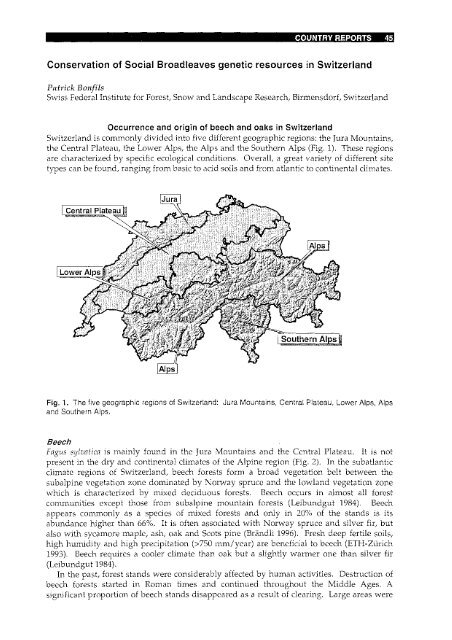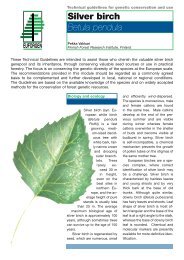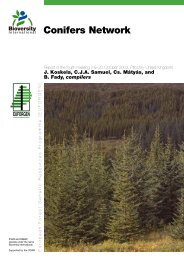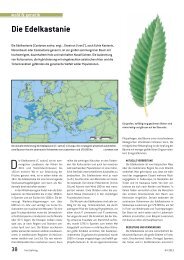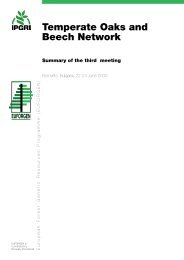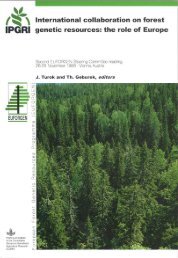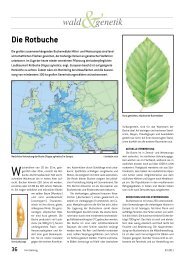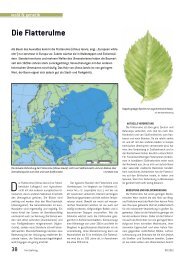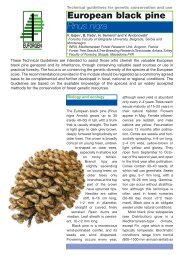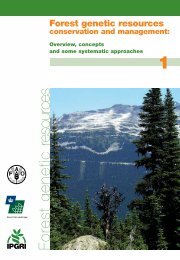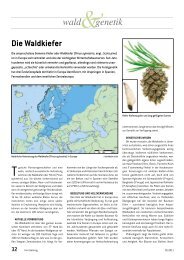Download PDF - Euforgen
Download PDF - Euforgen
Download PDF - Euforgen
Create successful ePaper yourself
Turn your PDF publications into a flip-book with our unique Google optimized e-Paper software.
Conservation of Social Broadleaves genetic resources in Switzerland<br />
Patrick Bonfils<br />
Swiss Federal Institute for Forest, Snow and Landscape Research, Birmensdorf, Switzerland<br />
Occurrence and origin of beech and oaks in Switzerland<br />
Switzerland is commonly divided into five different geographic regions: the Jura Mountains,<br />
the Central Plateau, the Lower Alps, the Alps and the Southern Alps (Fig. 1). These regions<br />
are characterized by specific ecological conditions. Overall, a great variety of different site<br />
types can be found, ranging from basic to acidsoils and from atlantic to continental climates.<br />
Fig. 1. The five geographic regions of Switzerland: Jura Mountains, Central Plateau, Lower Alps, Alps<br />
and Southern Alps.<br />
Beech<br />
Fagus sylvatica is mainly found in the Jura Mountains and the Central Plateau. It is not<br />
present in the dry and continental climates of the Alpine region (Fig. 2). In the subatlantic<br />
climate regions of Switzerland, beech forests form a broad vegetation belt between the<br />
subalpine vegetation zone dominated by Norway spruce and the lowland vegetation zone<br />
which is characterized by mixed deciduous forests. Beech occurs in almost all forest<br />
communities except those from subalpine mountain forests (Leibundgut 1984). Beech<br />
appears commonly as a species of mixed forests and only in 20% of the stands is its<br />
abundance higher than 66%. It is often associated with Norway spruce and silver fir, but<br />
also with sycamore maple, ash, oak and Scots pine (Brandli 1996). Fresh deep fertile soils,<br />
high humidity and high precipitation (>750 mm/year) are beneficial to beech (ETH-Zurich<br />
1993). Beech requires a cooler climate than oak but a slightly warmer one than silver fir<br />
(Leibundgut 1984).<br />
In the past, forest stands were considerably affected by human activities. Destruction of<br />
beech forests started in Roman times and continued throughout the Middle Ages. A<br />
significant proportion of beech stands disappeared as a result of clearing. Large areas were


